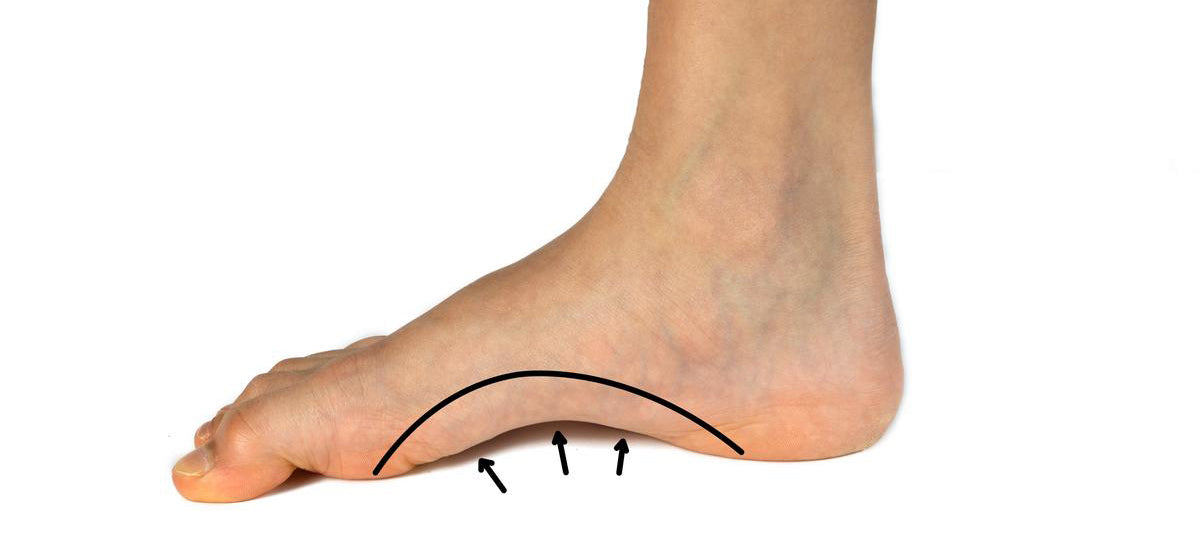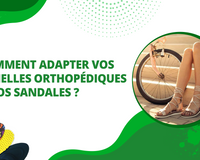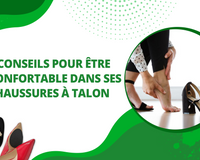Normally, the anatomy of the foot presents an arch at the level of the plantar arch. But as soon as this arch becomes excessivewe speak of hollow foot. Unlike the flat foot, the hollow foot is a foot pathology that causes pain under the heel, in the ankles or even in the knee.
Similarly, an arched foot is not necessarily pathological, unlike valgus foot, which is the most common form of hollow foot, causing pain in the hollow of the foot.
Generally caused by a neurological disorder, the hollow foot is a pathology that requires medical attention. consultation. This is known as neurological hollow foot. In the benign stage, the pain under the hollow foot can be treated with simple natural remedies.
What is a hollow foot?
A hollow foot is a malformation of the foot with excessive arching of the plantar arch. In most cases, this foot pathology leads to foot pain, claw-like toe deformity and/or steep heel tilt.
Hollow foot can be treated with a variety of therapies. symptoms of a neurological disease, it can have many other causes. It is therefore advisable to have your foot examined as soon as possible, to avoid a worsening of the pain in the soles of the feet.
Hollow foot consequences

When plantar arch pain is left untreated from the outset, it can lead to a number of complications:
- Achilles tendonitis
- Contraction of the posterior tibia muscle
- Foot and ankle pain or tarsal tunnel syndrome
- Plantar forefoot pain: at the metatarsal level
- Claw toe formation
What pains are associated with sunken feet?
Depending on the area of support, sunken feet can cause pain in the sole of the right foot and/or even pain in the plantar region of the left foot.
The fasciitis or plantar fasciitis, is the primary cause of foot pain. It is a thick tissue located under the sole of the foot. As well as helping to shape the arch of the foot, the plantar fascia provides propulsion, support, balance and cushioning.
Inflammation of this tissue therefore leads to pain on the underside of the foot. This phenomenon is called heel spurplantar fasciitis.
Hollow foot: heel pain
An unbalanced distribution of pressure on the ground is the result of excessive curvature of the heel. l'plantar arch. As a result, the heel will undergo shocks and pressure that cause heel pain.
- A highly stressed hollow heel can also have such consequences:
- The appearance of injuries: skin lesions, cracks due to pain, heel.
- Horn formation, accompanied by pain on the outside of the foot.
- Inflammation or talalgia: panniculitis, bursitis, altera...
Hollow foot: ankle pain
The ligaments of the ankle play the role of synchronizer between the legs and feet. Balance provided by the ankle is therefore reduced when walking, as it becomes very strained in the case of hollow feet. As a result of this imbalance, the ankle joint can suffer from foot pain.
Gardening, intense sports on foot and hiking are all activities likely to increase the risk of ankle pain.
Hollow foot: Knee pain
Knees and feet are two intrinsically linked articulatory organs that support walking. Their primary role is to keep you in proper walking position. balance. As a result, an overly pronounced arch of the foot impairs the proper functioning of the joints.
An imbalance in certain foot joints can therefore cause pain in the hollow of the foot. The imbalance caused by a hollow, valgus or varus foot reduces shock absorption when walking, which can lead to knee pain.
Hollow foot treatment: How to relieve pain under the midfoot?

While preventive measures may suffice in some cases where the pathology is mild, hollowfoot requires treatment when symptoms are observed. So how do you treat pain under the arch of the foot?
A medical treatment is the solution for sunken feet. However, there are simple natural remedies that can help relieve arch pain.
Wearing the right footwear, massaging, doing physiotherapy exercises... these are just some of the treatments that can cure sore arches.
Plantar massage
Foot massage is one of the most effective solutions to foot pain. natural practices. Simply massage your feet with a massage ball to eliminate cramps in the left or right foot. Stand upright and roll the ball around the soles of your feet in a circular motion for about three minutes.
This technique helps to relaxes and soothes the nerves and muscles of your feet. As a result, the muscle pain caused by sunken feet is relieved.
Physiotherapy exercises
There are a number of specific exercises designed to remove bodies in order to relieve pain of the foot. Techniques such as stretching calf and ankle muscles, arch strengthening and softening exercises and foot extensions and flexions.
Use of appropriate footwear
Wearing appropriate footwear and comfortable footwear are an essential part of your daily routine.
- Avoid shoes that are too tight and opt for shoes adapted to your morphology for your sports sessions or outings in town.
- Shoes with a wide, airy fit are ideal.
- Choose shoes with room for your toes. This way, the front of your foot is not compressed and your toes can spread out peacefully.
Suitable footwear should also offer ample arch support and a high heel counter. In this way, the balance required by the hollow foot to move easily is provided and restored, and the pain underfoot when walking is relieved.
Wearing orthopedic insoles can also help reduce pain in the soles of the feet.
However, a surgical intervention is necessary when the pain in the hollow of the foot and hollow foot deformities are severe and advanced.
Conclusion
In short, hollowfoot is a harmful pathology that can be linked to foot pain. The most recurrent is pain in the middle of the foot, which requires medical treatment to relieve.
Whether it's left foot pain or pain in the hollow of the left foot, or even right foot pain, there are tnatural treatments to soothe pain in the bottom of the foot.









